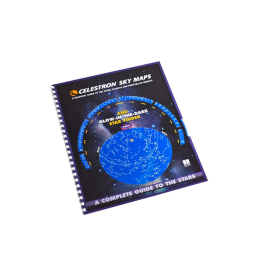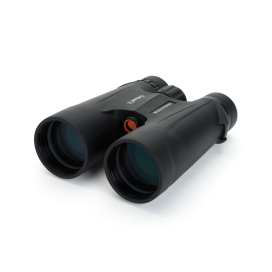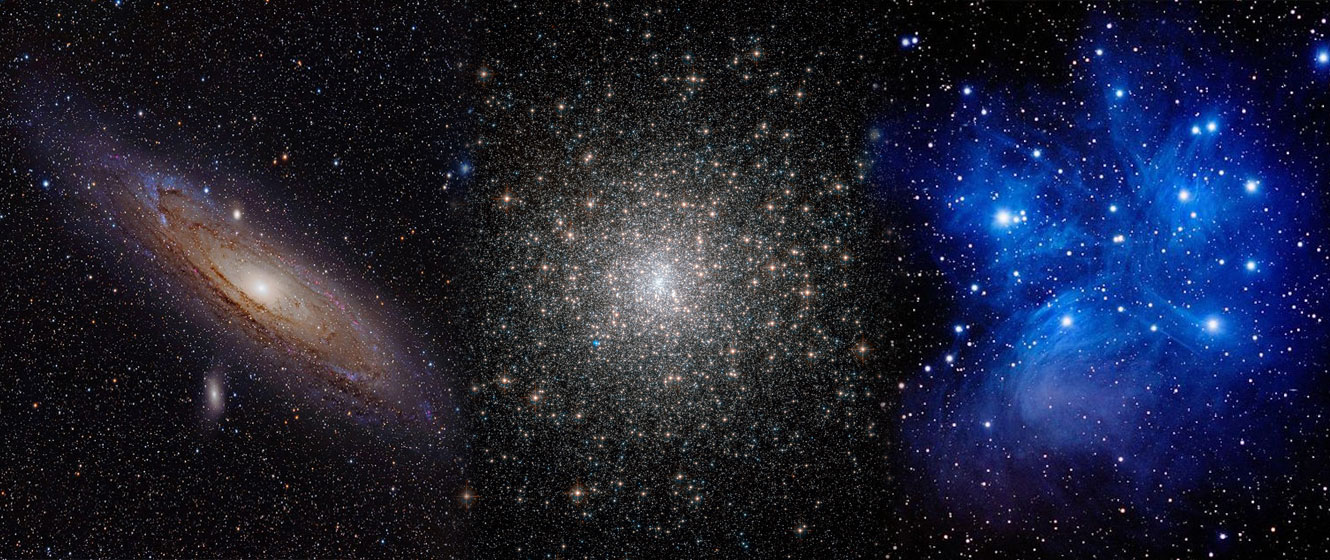
There’s something about fall evenings that often feels inviting. Maybe it’s the crunching of the leaves underfoot, or the smell of wood burning from fireplaces lit for the first time after the warmth of summer. Or maybe it’s the stars above and the promise of crisp, dark winter nights to come. Whatever it may be, take some time to enjoy these splendors of the autumnal night sky.
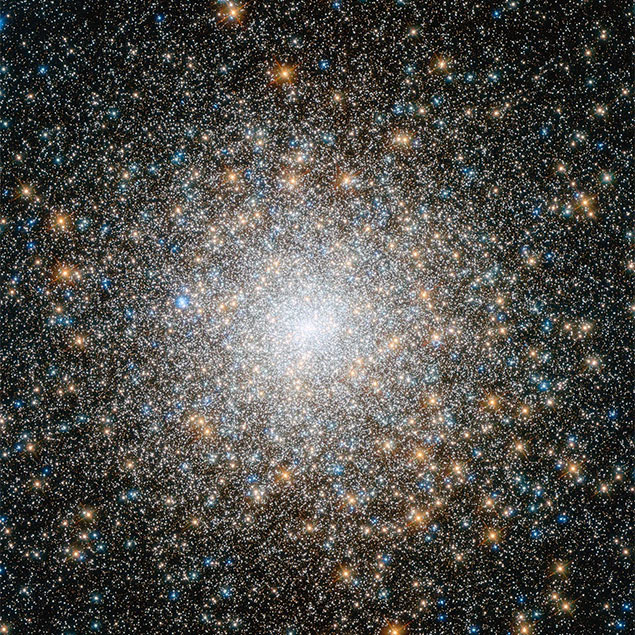
Image credit: NASA, ESA
M15, A Globular for Pegasus
There are some faint constellations associated with the autumn, but there’s a broad range of objects to be found among the brighter stars. Let’s start with Messier 15 (M15), a globular cluster found on the western edge of Pegasus, the Flying Horse. This cluster is probably best found by first pointing your scope toward Enif; our target can be found within the same field of view.
M15 should be visible with binoculars, but you won’t see much - just a tiny, faint grey circular and misty patch. As with most things, you’ll get a better view through a telescope. A low magnification won’t make a great improvement, so you’ll need to crank it up to about 100x to be able to properly appreciate it. The core is surprisingly large and bright and appears to extend about two-thirds of the way toward the edge.
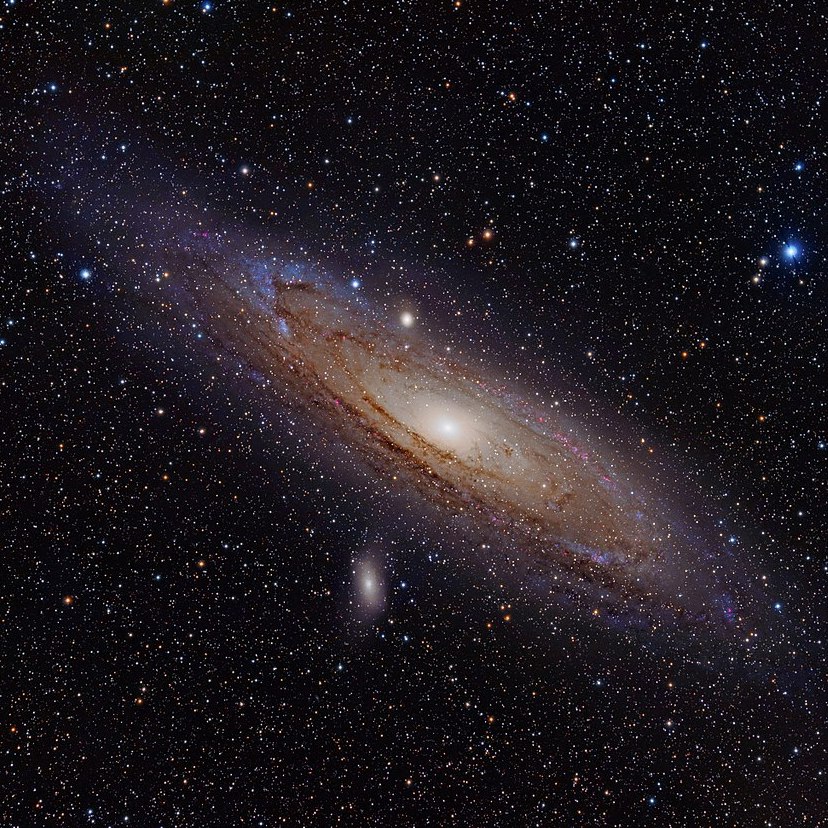
Image credit: Adam Evans
M31, A Galaxy Fit for a Princess
The fall is perhaps best known for our next target, found in the neighboring constellation of Andromeda, the Princess. The Andromeda Galaxy is visible to the naked eye under clear, dark skies and is the most distant object you can see without optical aid. Since you can see M31 with just your eyes, it’s also easily visible with binoculars. Through 10x50s, it appears as a small, thin sliver of mist.
You’ve probably already seen this galaxy online, or in books and magazines. In photographs, it appears stunning, but these images can give us a false sense of expectation. Through a small telescope, you’ll see a narrow, oval misty grey shape with a slightly flattened but brighter circular patch at its center. You may also notice a thin, dark band extending length-ways along the oval’s edge.
The key to observing the Andromeda Galaxy is to consider what you’re staring at. For starters, its light has taken over two million years to reach us. You’re seeing it as it was before the first humans even walked the Earth. This is a galaxy like our own, containing hundreds of billions of stars -- and for all we know, there could be observers in that distant galaxy looking back at us!
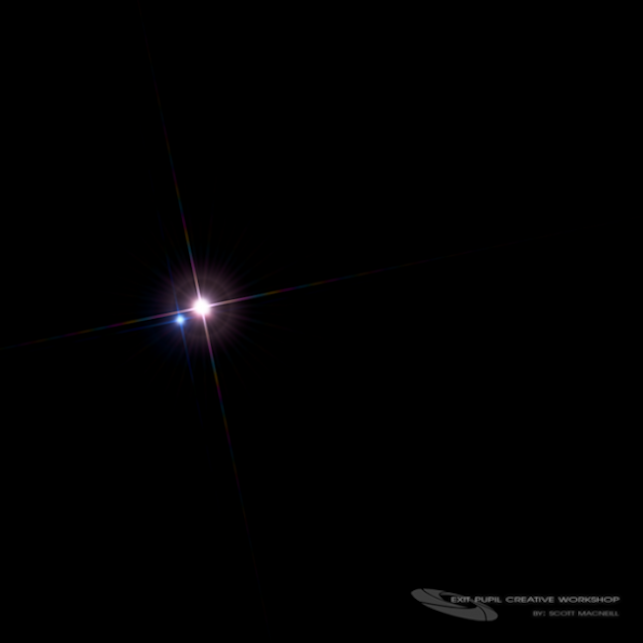
Image credit: Scott MacNeill
Almach, Andromeda’s Easy Double
Also in Andromeda lies a pretty double star, reminiscent of the summer’s Albireo. Known as Gamma Andromeda, or its more common name, Almach, this star can be easily split with small telescopes with a magnification of around 50x. The brighter star will appear a pale yellow-gold while its fainter companion is pale blue. You may even notice flashes of purple or violet!
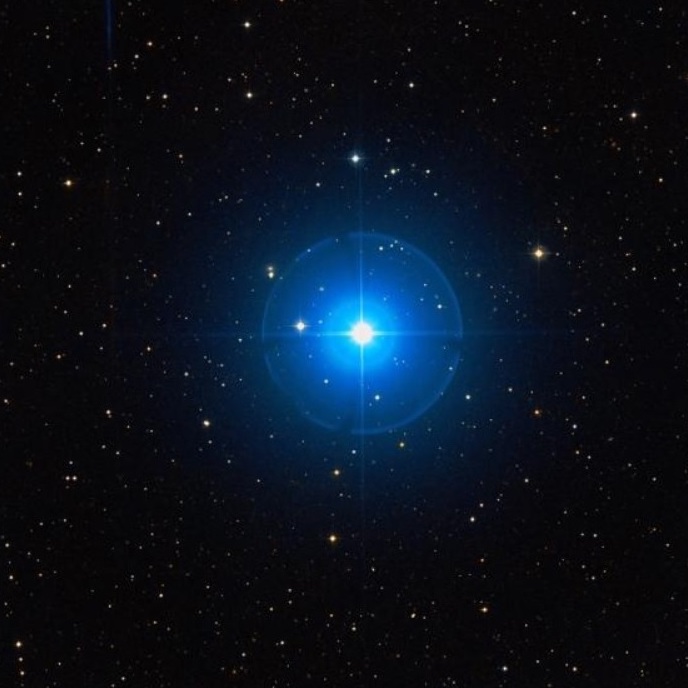
Image credit: Wikisky
Mesarthim, the Ram’s Best Multiple Star
Let’s dip down a little, toward the south, and the constellation of Aries, the Ram. Here we’ll find another double for small telescopes: the splendid Mesarthim. Also known by its official designation of Gamma Arietis, this double can be easily split with a magnification of just 30x. Both stars will appear brilliant white and of equal brightness. This is a true double star, with the two stars orbiting one another once every five thousand years or so.
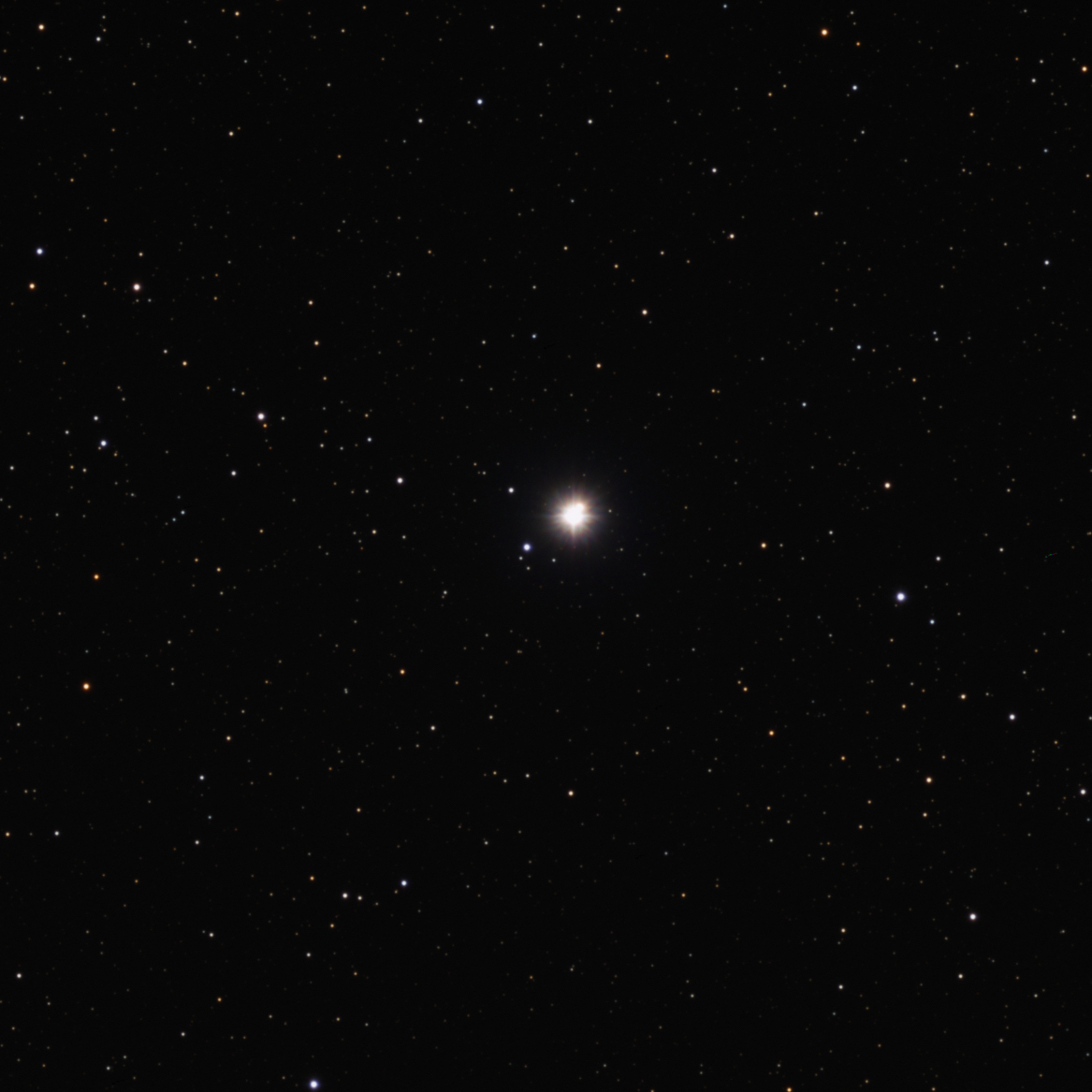
Image credit: David Ritter
Achird, the Jewel in Cassiopeia’s Crown
If we turn our attention now toward the north, we should see a crooked M shape over Polaris, the North Pole star. This group of stars is Cassiopeia, the Queen, and it lies in the northern area of the Milky Way. As a result, it’s home to a number of star clusters; but first we’re going to visit the last multiple star on our list.
Achird, or Eta Cassiopeiae, is widely regarded as one of the best of its kind. It lies just beside Scheda, or Alpha Cassiopeiae, and is another target for anyone with a small telescope. At a modest magnification of 35x, you should be able to split the star into two. The primary, or brighter star, appears pale gold, while it’s fainter companion appears coppery. (If the companion’s color isn’t apparent, try increasing the magnification.)
There’s more to see here. A third, tiny blue star is visible on the opposite side of the primary. If you’re using a magnification of 50x, you may need to increase the magnification first to spot it. Then try lowering the magnification to see how low you can go before the star is no longer visible.
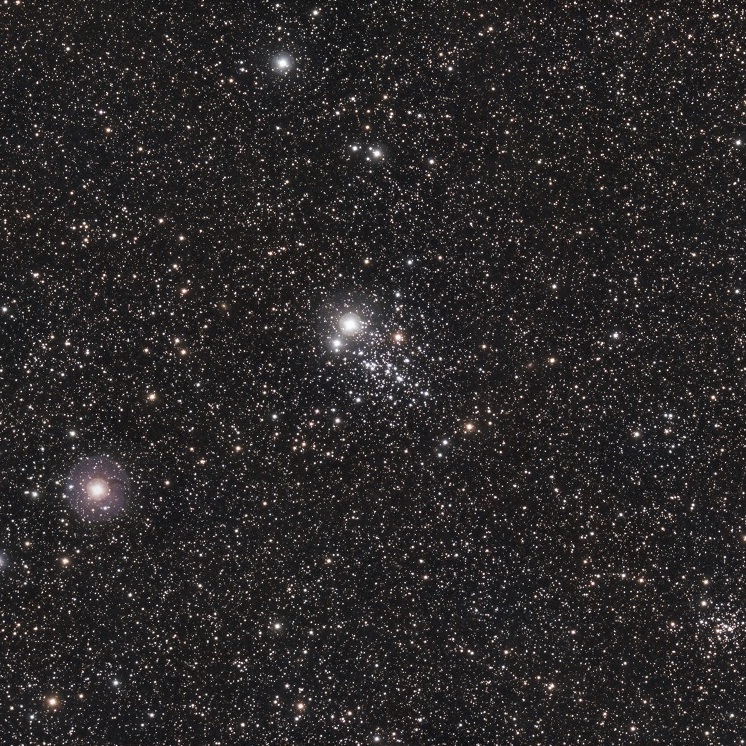
Image credit: Chad Quant
NGC 457 - The Owl Takes Flight
Let’s turn our attention now to one of the star clusters that Cassiopeia is known for. Perhaps the most famous of these is NGC 457, also known as the Owl Cluster. Although you can spot it with binoculars, it’s best seen with a telescope - and the reason for its name almost immediately becomes apparent.
Again, a low magnification of about 30x is all that’s needed to appreciate the cluster. You’ll notice two white stars (Phi Cassiopeiae) representing the eyes of the owl, with a scattering of numerous fainter stars forming the bird’s body and wings.
Does the cluster remind you of anything else? Others have compared it to the friendly alien from the movie E.T., the Extra Terrestrial. Look carefully and it’ll seem as though ET is waving hello with his arms outstretched.
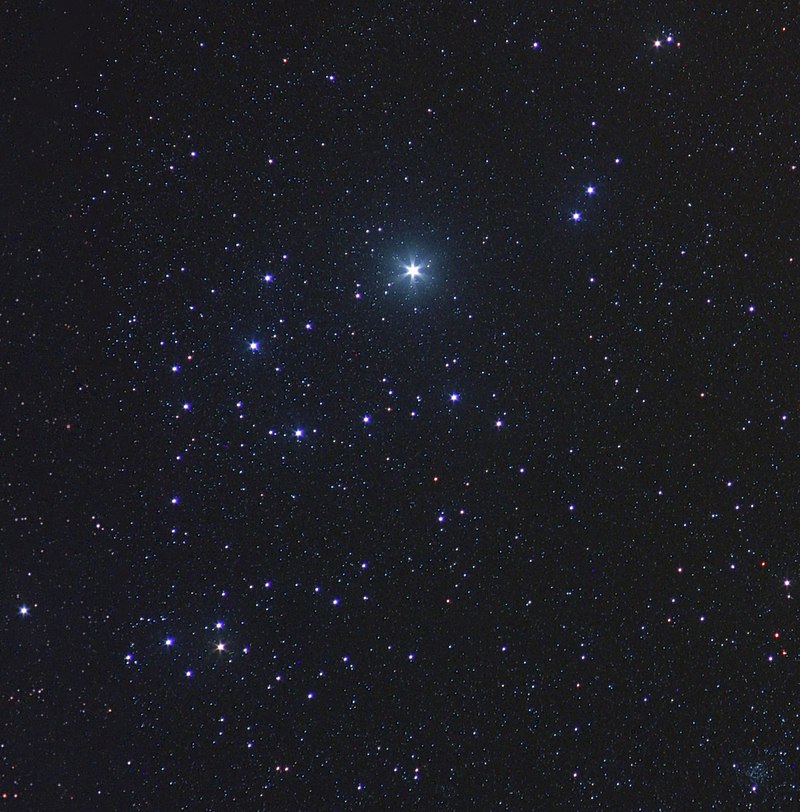
Image credit: Martin Gembec
A Scattering of Stars
Following the curve of Perseus south, we come to Mirfak, the brightest star in the constellation. Again, if you live under clear, dark skies and have good eyesight, you may notice a sprinkling of much fainter stars surrounding it. This is known as the Alpha Persei Cluster and, like the Double Cluster, it’s a fine view through binoculars.
In fact, the cluster is best observed with binoculars rather than a telescope. The reason is because it’s simply too large to fit within the field of view of even a low magnification eyepiece. However, even low-powered binoculars will show Mirfak forming a circle with five other blue-white stars, with numerous fainter stars scattered throughout the view.
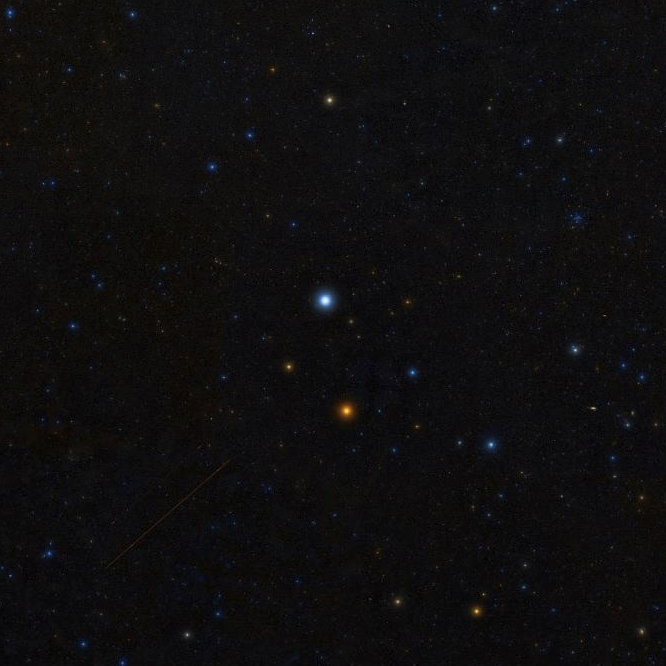
Image credit: Wikisky
Algol, the Demon Star
Remember the story of Perseus rescuing Andromeda using the head of Medusa? In mythology, Medusa was a winged woman whose gaze could turn any living creature to stone. In astronomy books, Perseus is often depicted as holding her head in his hand, and there’s a special star that marks her eye.
Algol, nicknamed “the demon star,” is a variable star, which means it actually changes brightness. Easily seen with just your eyes, you can watch it dim and then brighten over the course of several nights. This is caused by a fainter star passing in front of it, eclipsing it and dimming its light. Algol remains dim for about ten hours before brightening again.
It’s worth checking online or in a magazine for the dates and times of the eclipses and then checking its brightness in comparison to nearby stars. It won’t dramatically dim, but if you see the star at its brightest and then look again mid-eclipse, you should see a noticeable difference.
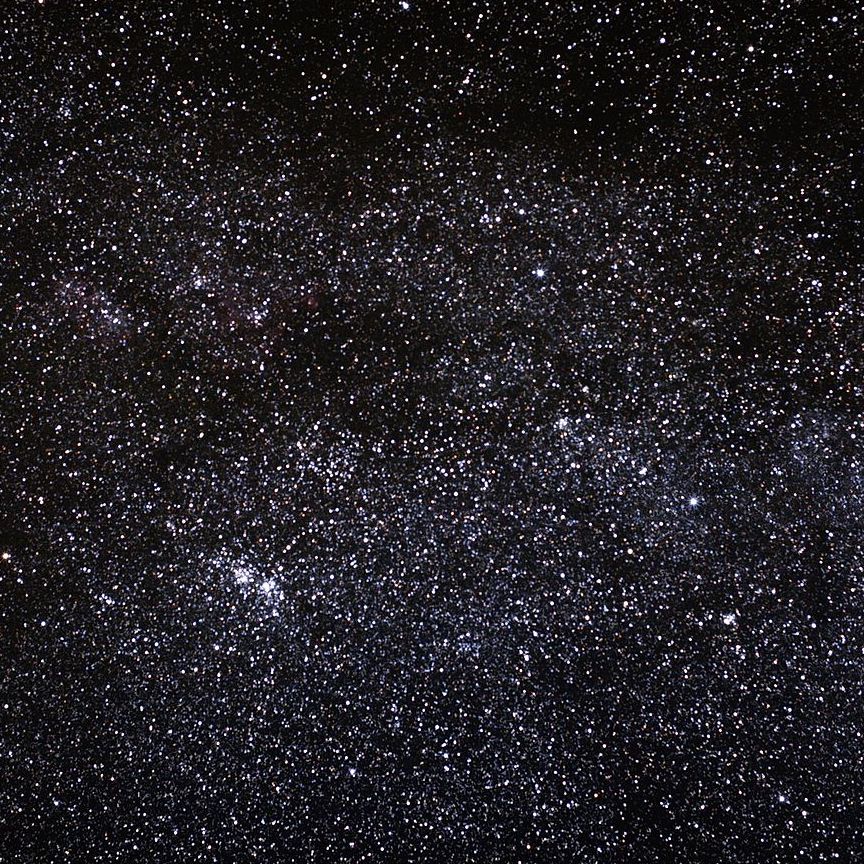
Image credit: Serge Brunier
Two for the Price of One
Following the zig-zag of Cassiopeia and down toward the south, we come to the curving lines of Perseus, the Hero. In Greek mythology, his trusty steed was Pegasus. Together they saved the day by rescuing Andromeda from the monstrous Kraken. He did this by pulling the snake-haired head of Medusa from a bag and, turning its gaze toward the creature, instantly turned it to stone.
Luckily for us, there are some much prettier sights to gaze upon among the stars of Perseus. For starters, about midway between Perseus and Cassiopeia there lies the wonderful Double Cluster. If you live under dark skies you may be able to glimpse these clusters with just your eyes.
Known since ancient times, these two misty patches were actually assigned letters, as though they were stars in the constellation. One became known as h Persei, while the other is Chi Persei. You’re actually looking at two separate star clusters that merely appear to lie very close to one another in the sky. (In reality, they’re hundreds of light-years apart.) The pair are a pretty sight in binoculars, with h Persei appearing smaller and more compact with a blue-white pair of stars at its center.
Chi Persei is about twice as large and more sparsely scattered. All the stars appear blue-white and are all roughly the same brightness. If you’re using a telescope, the best view is definitely though a lower power eyepiece - something around 30x or lower is probably best.
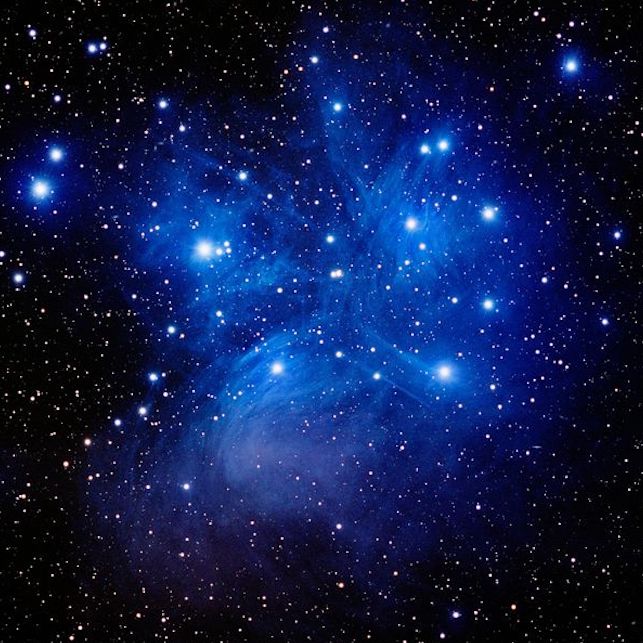
Image credit: Tony Hallas
The Stunning Beauty of the Seven Sisters
And so we come to the final - and arguably, finest - object in our fall tour-de-force. The Pleiades star cluster has been known and admired by many civilizations over thousands of years. They’ve not only inspired astronomers, but also artists and poets alike. They’re easily seen with the unaided eye, even from the suburbs of a city, and can be glimpsed as a tiny group of stars glinting against the background sky.
How many stars can you see? Despite also being known as the Seven Sisters, most people can only count six bright stars, leading some to speculate that one has dimmed over the millennia. This cluster is simply stunning through binoculars, and many astronomers prefer to observe them this way. That being said, the Pleiades are still worth a look through your telescope, but you’ll need a magnification of about 35x or less to fit them all within the field of view.
Whether you’re observing with binoculars or a telescope, you’ll see a sight that’s littered with blue-white stars. The five brightest form a “little dipper” pattern that’s similar to the Big Dipper in the northern sky. Telescopic observers may also see a tiny trio of stars just to the west of Alcyone, the bright star at the center of the cluster.
Click the arrow above to see MLA, APA, and Chicago Manual of Style citations.
MLA:
Bartlett, Richard. "Best Things to See in the Fall Sky," AstronomyHub, High Point Scientific, 26 Jul. 2023, https://www.highpointscientific.com/astronomy-hub/post/best-things-to-see-in-the-fall-sky.
APA:
Bartlett, R. (2023, July 26). Best things to see in the fall sky. High Point Scientific. https://www.highpointscientific.com/astronomy-hub/post/best-things-to-see-in-the-fall-sky
Chicago Manual of Style:
Bibliography:
Richard Bartlett. "Best Things to See in the Fall Sky," AstronomyHub (blog), High Point Scientific, July 26, 2023. https://www.highpointscientific.com/astronomy-hub/post/best-things-to-see-in-the-fall-sky.
Footnote:
Richard Bartlett, "Best Things to See in the Fall Sky," AstronomyHub, High Point Scientific, July 26, 2023, https://www.highpointscientific.com/astronomy-hub/post/best-things-to-see-in-the-fall-sky.
This Article was Last Updated on 07/26/2023





